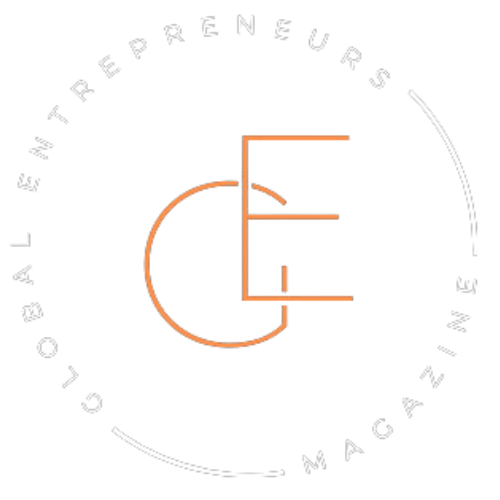You think you’ve got the rhythm down—wake up, answer messages, prep for a client call, juggle a half-written proposal while mentally drafting an Instagram caption. It’s barely 10 AM, and your brain’s already sprinted through a week’s worth of tasks.
That’s the part nobody talks about.
In the early days, most entrepreneurs wear every hat. CEO, marketer, customer support, bookkeeper. And somewhere in that whirlwind, time starts slipping through the cracks. You check the clock and wonder how it’s already Thursday.
It’s not laziness. It’s the grind that comes with doing it all. And even when you think you’re being productive, the constant switching between apps, emails, and to-do lists eats more time than you’d like to admit.
This isn’t about working harder. You’re already doing that. This is about reclaiming time—not with more people, but with the right tools.
Hiring sounds great—until you do the math
There’s a point when every overwhelmed entrepreneur thinks the same thing: I need to hire someone.
It sounds like the obvious next step. You imagine handing off all the repetitive tasks to someone reliable. Maybe you even daydream about having an assistant who just “gets it.”
But then the numbers hit.
A decent VA can cost anywhere from $500 to $1,500 a month. Add onboarding time, training hours, and the mental energy of explaining your process to someone else. Suddenly, your solution starts to look like another full-time job.
And it’s not just about cost—it’s about risk. What if they ghost you? What if they don’t deliver? What if you spend more time managing the help than doing the actual work?
Hiring can absolutely be a game-changer. But for a lot of solo founders, it’s not the first move. It’s the later one—after the systems are in place, after the chaos is under control.
That’s why many entrepreneurs turn to something more immediate. Tools that do the work without asking for PTO, sick days, or a 30-minute onboarding call.
The quiet shift: when tools started working like teammates
It didn’t happen all at once.
There wasn’t a big announcement or some grand strategy session. Just small changes—one tool added here, one shortcut discovered there.
At first, it was a calendar link. Then, a project board. A few weeks later, an AI draft that saved an hour of staring at a blank screen.
One by one, the tools started handling the stuff that drained the most energy. Scheduling. Sorting. Tracking. Drafting.
And for the first time in months, there was room to breathe. Not just physically, but mentally. No more scrambling through emails or forgetting what task came next.
The tools didn’t replace the work—but they stopped it from running your entire day.
The five digital tools that actually buy back time
The scheduling sidekick: Calendly (or any smart booking tool)
You know the dance. Someone wants to book a call, you send your availability, they reply with different slots, and suddenly it takes five emails just to lock in 30 minutes.
That used to be the norm—until a friend sent over a Calendly link.
One click. A few open slots. Confirmation in seconds.
For a small business coach juggling multiple clients, switching to a booking tool cut four hours a week. No more time wasted on scheduling gymnastics. No more double-bookings or forgotten calls.
It’s not just about convenience—it’s about energy. And not starting every conversation with, “What time works for you?”
The inbox cleaner: Superhuman, Gmail filters, or a smart assistant

Email doesn’t feel like a big time-waster—until you realize you’re checking it 40 times a day.
For one SaaS founder, email was the silent thief. She’d sit down to finish a pitch deck, open her inbox “just for a second,” and boom—there goes an hour replying, sorting, deleting, flagging. Every day.
Then came a system: filters, labels, canned responses, and a clean interface. She started using Superhuman, but it could’ve just as easily been Gmail rules and a well-trained assistant.
Now? Inbox to zero in under 20 minutes. High-priority emails float to the top. Newsletters and low-stakes stuff go into a separate tab she checks once a week.
Email stopped being a black hole and turned into a tool again.
The social autopilot: Buffer, Later, or Metricool
There was a time when posting on social felt like a full-time job. Coming up with a caption, designing a graphic, finding the right time to post—it added up fast.
A boutique skincare brand owner used to wake up in panic, remembering she hadn’t posted anything all week. She’d scramble to put something together in real time, usually while answering customer DMs and restocking inventory.
Then she started batching.
One Sunday afternoon, she loaded a week’s worth of posts into Metricool. Captions, images, hashtags—all set. Monday rolled around, and the content went live while she packed orders.
That shift didn’t just save hours—it saved her sanity. Social media stopped being a daily stressor and became something she could set and forget (at least for a little while).
The task tracker that thinks for you: Notion or ClickUp
Some entrepreneurs live off sticky notes. Others try to keep everything in their head. Either way, it works—until it doesn’t.
One digital consultant had a whiteboard, three different notebooks, and an app she forgot to check. Things kept falling through the cracks. A missed invoice here. A forgotten follow-up there. And the mental load? Constant.
She finally gave ClickUp a shot. At first, it felt like just another to-do list. But once she created templates for client work, set recurring tasks, and built dashboards, something clicked.
Every project had a home. Every idea had a shelf. No more guessing what came next.
Now, she opens one screen and sees the full picture—deadlines, progress, even her own weekly goals. The chaos didn’t disappear, but it finally had structure.
The AI writing wingman: ChatGPT, used with purpose
Writing wasn’t the problem. Starting was.
A marketing consultant spent hours staring at blinking cursors. Blog posts, sales emails, Instagram captions—they all needed to sound smart and on-brand. But half her time disappeared just getting the first draft out.
Then she stopped treating AI like a writer and started using it like a wingman.
She’d punch in a rough prompt—something simple, like “Draft a welcome email for a new subscriber who signed up after a webinar.” Within seconds, she had a decent base. Not perfect, but enough to get the gears turning.
She edited, added her tone, swapped in stories. What used to take 90 minutes now took 30.
The point wasn’t to hand over the voice of her brand. It was to stop losing time to blank pages.
What changed when the tools took the wheel
It wasn’t just about getting time back. It was what that time felt like.
A founder who once sprinted through 12-hour days suddenly had quiet mornings. No frantic email checking. No forgotten tasks lurking in the back of her mind. Just space—to think, to plan, to breathe.
That extra hour in the afternoon? It became a walk. A nap. A brainstorming session that led to her next product idea.
Another entrepreneur found himself sleeping better—not because the work disappeared, but because it finally felt held. Calendars were organized. Tasks were tracked. Content was scheduled. He didn’t have to keep it all in his head anymore.
And with that weight lifted, something else showed up: clarity. The kind you only get when your brain isn’t juggling 47 open tabs, both digital and mental.
You don’t need to do everything. But you need to stop doing everything
Most entrepreneurs wear busy like a badge. It feels noble, staying up late, doing it all, holding the whole thing together with caffeine and calendar reminders.
But being in control doesn’t always mean doing it yourself.
The smartest shift isn’t in hiring fast or scaling big—it’s knowing what to offload, and when. Not to people. Not yet. But to systems that don’t drop balls, forget deadlines, or burn out.
No tool can replace your vision. No software can replicate your instinct. But the right ones can give you something just as valuable: room to actually think.
You don’t need to build an empire on your own. You just need to stop carrying the bricks one by one.



